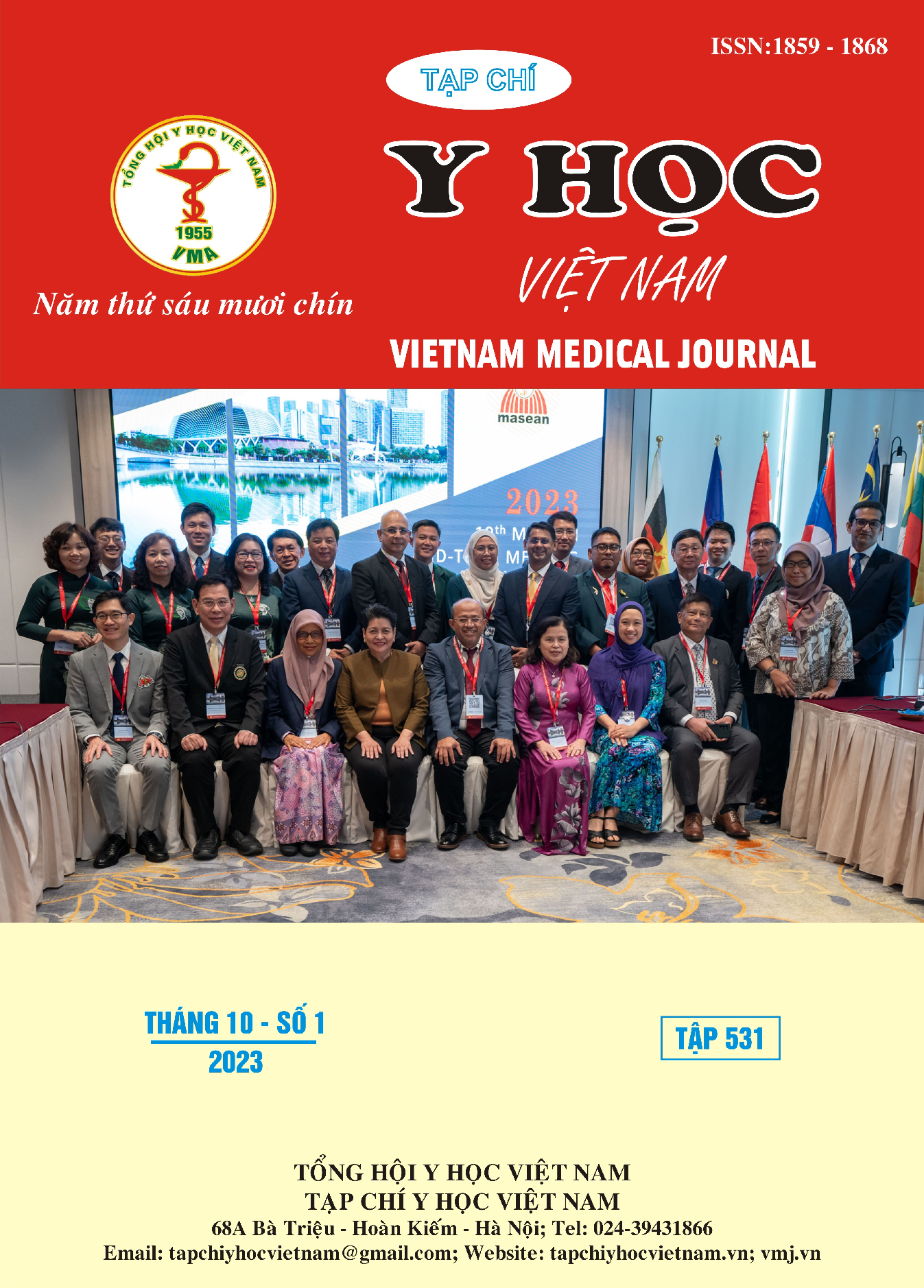CHARACTERISTICS OF FRAILTY SYNDROME IN PRIMARY KNEE OSTEOARTHRITIS PATIENTS AT BACH MAI HOSPITAL
Main Article Content
Abstract
Objectives: Describe the characteristics of frailty syndrome and some factors related to frailty syndrome in primary knee osteoarthritis patients at Bach Mai hospital. Subjects and methods: A cross-sectional study is conducted on 286 inpatients and outpatients diagnosed with primary knee osteoarthritis according to the standards of American College of Rheumatology 1991 at the Centre for Rheumatology in Bach Mai hospital from August 2022 to February 2023. Results: The proportion of patients with frailty syndrome accounted for 99,0%, of which mild frailty was 36.7%, moderate was 28.7% and severe was 33.6%. Among the component criteria of the CRAF frailty syndrome, pain symptoms, limited physical function, social acivity and multiple drug use accounted for a high proportion, respectively 100%, 99.3%, 96.2% and 90.3%. The rate of frailty syndrome in patients aged 60 years and older is 100%. Factors such as age, BMI, number of painful knee joints and serum CRP levels are related to frailty syndrome. Conclusion: The proportion of frailty syndrome in primary osteoarthritis patients was quite high and tends to increase with age, BMI. The higher the serum CRP level is, the more severe the frailty syndrome is. Therefore, it is necessary to routinely screen for frailty syndrome in primary osteoarthritis patients.
Article Details
Keywords
Frailty syndrome, primary knee osteoarthritis, CRAF.
References
2. Trần Thị Quỳnh Trang, Đào Thu Hồng, Phạm Thị Nguyên. Nghiên cứu đặc điểm lâm sàng, cận lâm sàng trong thóa hóa khớp gối tại Bệnh viện Đại học Y Hải Phòng năm 2021. Tạp chí Y học Việt Nam. 2022; 515(Số đặc biệt), pp. 285-290.
3. Altman R. D. Classification of disease: osteoarthritis. Semin Arthritis Rheum, 1991; 20(6 Suppl 2), pp. 40-7.
4. Belo J. N., Berger M. Y., et al. The prognostic value of the clinical ACR classification criteria of knee osteoarthritis for persisting knee complaints and increase of disability in general practice. Osteoarthritis Cartilage, 2009;17(10), pp. 1288-92.
5. Castell M. V., van der Pas S., et al. Osteoarthritis and frailty in elderly individuals across six European countries: results from the European Project on OSteoArthritis (EPOSA). BMC Musculoskelet Disord, 2015;16, pp. 359.
6. Joo S., Lee J., et al. AB0866 The prevalence and clinical features of frailty syndrome in patients with symptomatic radiographic knee osteoarthritis and rheumatoid arthritis: a study of the korean national health and nutrition examination survey (knhanes). Annals of the Rheumatic Diseases. 2020;79, pp. 1739.1-1740.
7. Misra D., Felson D. T., et al. Knee osteoarthritis and frailty: findings from the Multicenter Osteoarthritis Study and Osteoarthritis Initiative. J Gerontol A Biol Sci Med Sci. 2015;70(3), pp. 339-44.
8. Salaffi F., Di Carlo M., et al. The Comprehensive Rheumatologic Assessment of Frailty (CRAF): development and validation of a multidimensional frailty screening tool in patients with rheumatoid arthritis. Clin Exp Rheumatol. 2020;38(3), pp. 488-499.


